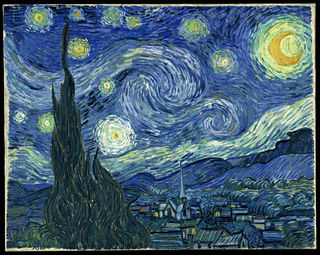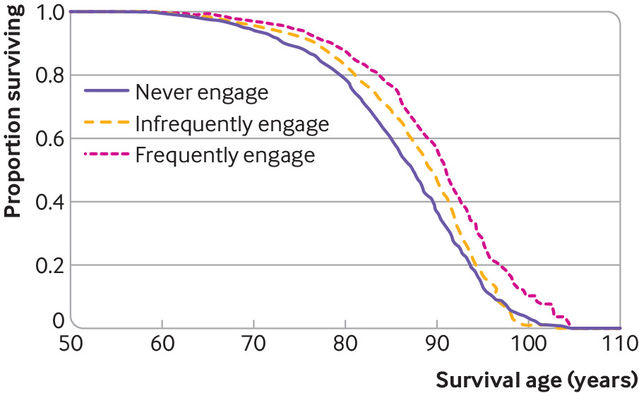Health
Do Art Lovers Live Longer?
Cultural activities may be linked to living longer, a 14-year analysis reports.
Posted December 23, 2019 Reviewed by Lybi Ma

People who engage in arts-related cultural activities such as going to museums or musical concerts may have a lower risk of dying prematurely, according to a new study by researchers from University College London (UCL).
The UCL researchers found a substantial reduction in early mortality among older adults who engaged in cultural activities. After a variety of confounding factors (e.g., socioeconomics, occupational status) were taken into account, those who participated in cultural activities "every few months or more" had a 31 percent lower risk of premature death.
This "arts engagement and mortality" analysis spanned 14 years and involved nearly 7,000 older adults. Study participants self-reported the frequency of their arts engagement and cultural activities such as going to museums, art galleries, concerts, and the theater.
These findings (Fancourt & Steptoe, 2019) were published on December 18 in the "Express Yourself" Christmas issue of The BMJ. The British Medical Journal's Xmas issue is an annual tradition that features peer-reviewed scientific research that is a bit more whimsical and quirky than typical BMJ content. In 2012, a New York Times article described BMJ's holiday tradition as offering "lighthearted but rigorous scholarship."
Daisy Fancourt and Andrew Steptoe co-authored this paper. The authors are quick to point out that these observational findings linking cultural activities and longevity are correlative. To be clear: This research does not establish a causal link between frequent arts engagement and living longer.
As would be expected, part of the link between longevity and arts engagement is attributable to the socioeconomic advantages of those who have the leisure time and financial resources to engage in cultural activities regularly.
That said, Fancourt and Steptoe report that arts engagement may have a protective association with longevity that transcends socioeconomics or occupational status. According to the authors, "This association might be partly explained by differences in cognition, mental health, and physical activity among those who do and do not engage in the arts, but remains even when the model is adjusted for these factors."

The co-authors of this paper are transparent about sharing counter viewpoints that cast doubt on the impact that the arts may have on extending longevity. "Some research has proposed that the universality of art and the strong emotional responses it induces are indications of its association with evolutionary adaptations, while other research has questioned whether art is an evolutionary parasite, with no particular evolutionary benefits to our species," Fancourt and Steptoe write.
Eight Ways Arts Engagement and Cultural Activities May Be Linked to Longevity
- Alleviates chronic stress and depression by facilitating face-to-face social interactions.
- Enhances social capital, which builds individual and collective resources.
- Reduces perceived social isolation and loneliness.
- Promotes emotional intelligence, boosts social perception, and may increase empathy. These factors are linked to a better chance of survival.
- Increases physical activity and reduces sedentary behaviors, which benefits psychological and physical well-being.
- May increase having a stronger sense of purpose in life, which is associated with better immune function and healthier lifestyle choices.
- Fosters creativity and imagination, which are linked to higher odds of survival throughout Homo sapiens' evolution.
- Arts-related activities, in addition to a wide range of other "leisure time" activities (e.g., gardening, having a hobby, going to church), may have a protective association with premature mortality.
Based on their most recent findings (2019), Daisy Fancourt and Andrew Steptoe posit: "There is a strong theoretical rationale that underlies the hypothesis that arts engagement could be linked to people's chance of survival."
In a perfect world, frequent arts engagement would be more of an equal-opportunity endeavor that didn't cost an arm and a leg. But we don't live in a utopian society; for many people making minimum wage (or less) arts engagement and cultural activities don't fit into the budget.
Not All Arts Engagement and Cultural Activities Are Cost-Prohibitive
As I was growing up in Manhattan during the early-1970s, going to museums and seeing the latest Broadway plays (or off- and off-off-Broadway shows) is what my family and friends did for fun.
At the time, participating in cultural activities became blasé. I took arts engagement for granted because it was something my friends and I did every weekend. However, with hindsight, I realize how lucky and privileged I was to be immersed in the arts and exposed to so many diverse cultural activities as a kid.
Unfortunately, in today's economy, you'd have to be a gazillionaire to take your family to see Broadway shows regularly and tickets to most cultural activities ain't cheap. Nevertheless, most museums in New York City (and other cities) are free for children under 12 and also have "free museum days and pay what you wish" days for adults.
Today, as a much older adult in December of 2019, I still have an appreciation for the arts; but I don't visit museums, go to plays, or participate in other cultural activities very often. However, this morning I decided that my lack of arts engagement is going to change in 2020.
After learning about all the possible benefits associated with arts engagement and cultural activities while researching the latest paper (2019) by Fancourt and Steptoe, I made a New Year's resolution to be more of an active art lover in the next decade.
Maybe this year, instead of just making resolutions that involve depriving yourself of hedonistic pleasures, you'll commit to some New Year's resolutions that are fun—like going to see a concert or having other arts-related experiences that make you feel good and may increase your longevity?
References
Daisy Fancourt and Andrew Steptoe. "The Art of Life and Death: 14 Year Follow-Up Analyses of Associations Between Arts Engagement and Mortality in the English Longitudinal Study of Ageing." BMJ (First published: December 18, 2019) DOI: 10.1136/bmj.l6377




